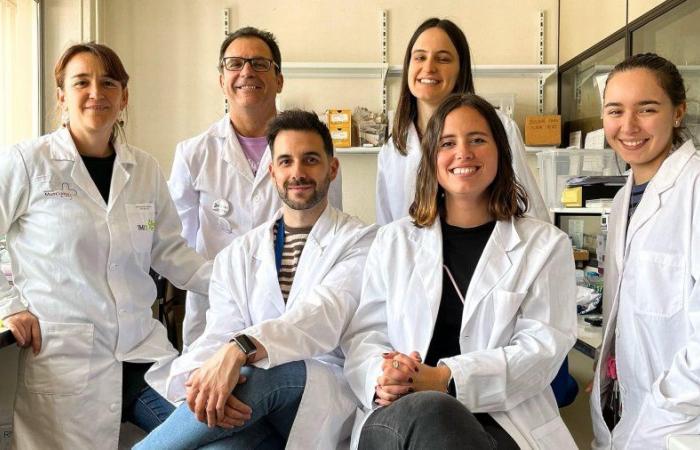
The immunity, inflammation and cancer team, led by Victoriano Mulerodiscover that spironolactone, a medication widely used to treat hypertension and heart failure, could be the key to improving the treatment of anemia of Diamond-Blackfan (DBA)a rare disease that affects the production of red blood cells.
This study, published in the HEMASPHER magazine, demonstrates that the NLRP1 inflameoma specifically blocks inflameoma, a molecular structure that, when activated due to stress in protein manufacturing (ribosomal stress), triggers inflammation and hinders the production of red blood cells. By inhibiting this mechanism, Spironolactone manages to correct the defects in erythropoiesis-the red blood cell formation process-something that researchers verified both in cellular crops and in zebra fish and in samples of patients with Diamond-Blackfan anemia.
“The fact that a known and affordable medication as spironolactone can be reused to treat an orphan disease such as DBA is an extraordinary opportunity”says Mulero, professor at the University of Murcia and researcher at the Murcian Institute of Biosanitary Research Pascual Parrilla and the Biomedical Research Center in Rare Diseases (CIBERER).
Currently, people suffering from DBA should be carried out chronic blood transfusions or, prolonged corticosteroids, both with serious side effects. The possibility of reusing a drug already approved by regulatory agencies, such as FDA and EMA, opens a new safer and more accessible therapeutic route. Emphasizing the Mulero researcher: “Our research shows that it is possible to rediscover the hidden potential of medicines already approved to respond to non -covered clinical needs.”
Unlike other drugs in its class, Spironolactone acts on NLRP1 without depending on hormonal receptors, which suggests a new mechanism of action and expands its possible therapeutic applications.
“Current treatments for the DBA, such as corticosteroids or chronic transfusions, have important side effects. Reproducing Spironolactone offers a safer and more accessible alternative that could transform the clinical management of these patients”adds Sylwia Dominika Tyrkalska, postdoctoral researcher.
Collaborative and broad support investigation
This work has been possible thanks to the collaboration between researchers at the University of Murcia, the Murcian Institute of Biosanitary Research Pascual Parrilla, the Biomedical Research Center in Rare Diseases (CIBERER), the Virgen de la Arrixaca University Clinical Hospital (Murcia), the Morales Morales Meseguer (Murcia) University Hospital, the Vall d’Hebron University Hospital (Madrid).
The study has been carried out mostly by the researcher Lola Rodríguez Ruiz and researcher Juan Manuel Lozano Gil, both UMU research staff whose doctoral theses have contributed decisively to these findings.
The project has been funded by the Seneca Foundation – Science and Technology Agency of the Region of Murcia, through its scientific knowledge generation programs of excellence and proof of concept, as well as by the Ministry of Science, Innovation and Universities/State Research Agency, the Carlos III Health Institute, the US DBA Foundation, and the UMU.





